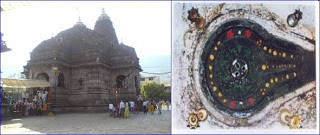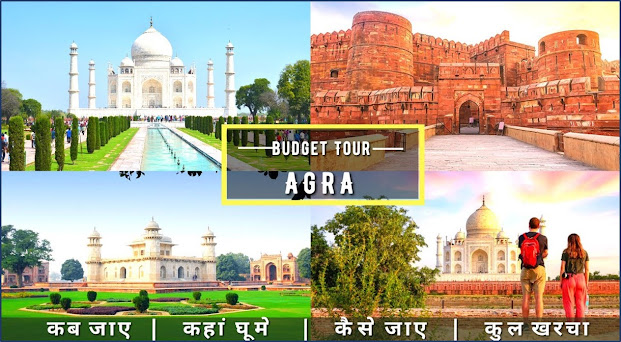One of the twelve Jyotirlingas of King Shankara, the tenth is known as Tryambakeshwara. This great JyotirTaus in Gautami banks has a different form. The Lord in this Grabhagriha of the temple is not worshiped by Ate. checks with water (Jalahari) unlike others.
There is only part of the bottam of the grinding stone (Ukhali), instead, as a hole. In that hole there are three Lingas shaped like six. They should represent Brahma, Vishnu and Mahesha and that is why Tryambakeshwara. Of the three Lingas, the Mahesha Tiger always has a shower water from the upper orifice.
It is a natural source of water that descends like King Abishah. From this JyotiaTry sometimes, the roar of a lion is heard. Sometimes flames can be seen from them. On those occasions, to avoid Shankara's wrath, milk mixed with Bang (opium) is placed in a pot and the pot is hung upside down to go down to Linga.
Rudrabisheka mantras were sung at that time. All that liquid just disappears into the hole, where the milk stops flowing, then the Lord should have calmed down and been at peace. About these different events that happen here. they have a unique story attached to each other.
Ahalya's husband, Gautama, made Tapas or penance on Mount Dakshina. It did not rain for a hundred years and the earth was drying up and species becoming extinct. Seeing these drought conditions, the inhabitants, the saints, and all the birds and animals fled there.
Saint Gautam made the beautiful Mangalik Tapas with Pranayama for six long months. Vareena, the rain of God rejoiced and appeared before Gautama, who was asking for water. At God's direction, Varuna, Gautam dug a hole in his hand. With the help of Varuna's miraculous powers, it was filled with water.
Varuna said: "Because of the power of your remorse, this well will become an endless source of water" Akshya. "He will be famous for your name.
After the discovery of this water, the saints began to make preparations for Yagna and the production of "Breehika: 'The river that gave cattle as Go-Daan became Godavari. Ganga who came at Gautama's request became Gaugtama Ganga.
That was a good time for Brahmagiri, the middle period, when the kurmavatara ended and before the thought of Varahavatar, Sanghiparva, the planet Gugu (Jupiter) was in Sing of Simha (Leo), Magha Shuddha Dashami, Thursday afternoon, when Gautami Ganga, Brahma, Vishnu and Vishnu were born , all confirmed the acquisition of Tryambakeshwar and remained there for their devotees. The Brahmagiri area also looks like Lingamurthy.
From the tip, Gautami Ganga's water flowed. The spring in Brahmagiri from which Godavari comes from, is known as Gangadwar. The water of the Ganga flows on a cowface-shaped rock, always. The Godavari mata temple is found here.
The idol looks happy and peaceful. VarahaTeertha is near. After leaving Gangadwar, the Godavari River sinks and almost disappears, reappearing in Tahalhati. To prevent it from disappearing, Gautam Rishi threw Darbhas on all fours. As a result, Godavari flows to Kushavarti. Kashavarti MahaTeerth is a 27-meter circle.
It is built very strong. There are steps on both sides to make it easier to descend into the water. During the Simhasta (Leo), every 12 years, Kumbhmela is held here. Lakhs of people take a sacred dip in Kushavarta.
On all four sides of the Kushavartha corridors are built. Sculptures are carved here in Brahmagiri Talhati, near Kushavarti, on a large lake called Ganga Sagar. Nearby are the Samadhi of Nivruttinath and the caves of Gorakshaguja.
After entering Samadhi in the Netherlands, Gyaneshwar died in front of his older brother. This saddened Nivruttanath. A few days later, he also entered Samadhi here, in this shrine of his Gugu Gahineenath. It is here in this cave, that Gahineenath gave the initiation or Deeksha of Nathpanth in Nivruttinath.
It is said that Sri Datta Bhagawan reached Siddhi in the same cave. Nearby, there is Neaparaparvat, where the Neelambika temple is located. In Anjali Parvat, HanumanAnjani's mother makes her regrets, On the way to the paricrama, there are beautiful places like Ram Teerth, PrayagTeerth and Nrisimha Teerth etc.
Pesha's kings have planted trees in all 25-foot-long distances. During the reign of the Peshwas, criminals were asked to perform the Brahmagiri Paracrama (circling) as punishment. The town of Tryambak is about 150 feet [155 m] above sea level.
It has the pure mountain spirit and is a holy place of holiness. The temple of Tryambakeshwar was built by King nanasaheb Peshawa. The pillars on each side of the Temple are adorned with beautiful paintings. There is Nandi's temple in front of the great temple.
Everyday drummers came to play at Nakkaras. At the main temple of Tryambakeshwar JyotirLinga, Nitya (always) Puja, Arab and Prasad etc. On special occasions, larger gatherings are also planned. In such cases, the image of the Lord is adorned with elaborate costumes and jewelry, including a crown full of precious stones.
The crown was brought by Naro Shankarji as part of his spoils, during his invasion of the South. He presented the crown to Lord Shiva. Sardar Vinchurkarji has given a good cart to the ruling diety. Every Monday, the Tryambakeshwar flew to Kushavarti at great speed and returns to the mighty Gangs and Godavari, a small river called the Ahilya joins.
In this Sangam (meeting place) a ritual called Nagaharam baNaganarayanbal is organized by certain people. It is believed that because of certain unfulfilled ancestral desires, some people have no children. In order to remove this practice Nayanarambal has been held.
Made like the tyrants of North India. It is said that by performing this ritual, people will be blessed with children. Someone rightly says 'Tatra gatwa kuru shraddhaapitunuddishya yatnataha "! Tryambakeshwar Jyotirt_in is a unique, great, sacred and wonderful place to travel.' Jays Tryambakeshwarl Jaya Tryambakeshwarll '






